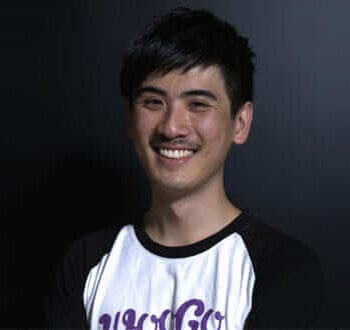Key Takeaway
Jurassic Park, a 1993 film, revolutionized cinema by using computer-generated imagery (CGI) to bring dinosaurs to life. The adaptation, written by Michael Crichton and David Koepp, changed the ending and paved the way for future dinosaur-themed films. Stop-motion tests led to go-motion, but Spielberg’s team used CGI modeling and animation for Jurassic Park, resulting in iconic dinosaur attacks and retraining experts. Spielberg’s Jurassic Park captivated audiences with its atmospheric tension, CGI scenes, and thrilling events, paving the way for future fantasy filmmaking and showcasing the power of cinema.
This month marks the 30th anniversary of a film that changed cinema forever. 1993’s Jurassic Park used pioneering computer-generated imagery (CGI) to bring dinosaurs to life in Steven Spielberg’s adaption of the novel of the same name.
The film quickly became a must-see event and audiences were left amazed by the spectacle of seeing believable dinosaurs grace the big screen for the first time. Jurassic Park not only made giant leaps in special-effects filmmaking, but it also paved the way for myriad subsequent productions that featured beasts of all shapes and sizes.
Jurassic Park originated in 1983 as a screenplay by Michael Crichton, whose previous foray into film as writer and director of Westworld (1973) featured an immersive amusement park where androids malfunctioned and caused havoc. But his dinosaur-themed story first found publication as the novel Jurassic Park, which was released in 1990 and became a bestseller.
That’s when it came to the attention of Steven Spielberg. By the early 1990s, Spielberg was no stranger to big-budget science-fiction filmmaking. The likes of Jaws (1975), Close Encounters of the Third Kind (1977), Raiders of the Lost Ark (1981) and E.T. the Extra-Terrestrial (1982) had demonstrated that he had a track record of making extremely successful effects-heavy but story-led films. That made Jurassic Park perfect for his next production.
Spielberg’s adaptation, written by Crichton and David Koepp, changed a number of aspects of the novel’s ending to provide a satisfactory conclusion to the film, yet leave enough loose ends for further exploration in the franchise.
Of course, Jurassic Park wasn’t the first time dinosaurs had been featured on the big screen. 1933’s King Kong is an early example of a film that pushed the boundaries of what was then possible by including sequences of the eponymous giant gorilla fighting with dinosaurs.
Creatures were brought to life for cinema goers by combining stop-motion animation with rear projection (where previously shot film is projected onto a backdrop and actors are recorded performing in front of it). Other feature films such as Journey to the Center of the Earth (1959), The Lost World (1960) and The Land That Time Forgot (1974) had attempted alternative ways of bringing dinosaurs to the screen, including puppetry and even fitting live reptiles with prosthetics.
Of these methods, a combination of stop-motion animation for long shots and animatronic puppets for close ups were initially chosen by Spielberg for Jurassic Park.
CGI and animation
Stop-motion tests produced good results, especially in the development of go-motion, a technique which blurred models to provide a sense of movement similar to that of live action. But Spielberg and his team were still keen to go further with what was possible. Dennis Muren from the visual effects company, Industrial Light and Magic (ILM), provided an alternative approach by using CGI modelling and animation.
Off the back of pioneering CGI work in The Abyss (1989) and Terminator 2: Judgement Day (1991), Muren and his team produced a test sequence of skeletal dinosaurs. Additional tests featuring a Tyrannosaurus rex with added skin further cemented the realisation that this was the way to go for the film. This technique built the model of the dinosaur from bones, added muscle and then finally, the skin. The T. rex escapes its paddock.
It seemed the assembled stop-motion team had been made extinct by this innovative technology. However, the model makers and animators were the experts on dinosaurs and their movement, and they retrained as computer animators to continue to use their skills on the production.
Jurassic Park features 15 minutes of on-screen dinosaurs, of which approximately nine minutes feature Stan Winston’s animatronics and six minutes of ILM’s CGI animation. The success of this combination is seen in the iconic T. rex attack scene. A number of animatronic shots feature close-ups of the T.rex before the full-height shots provide the creature’s threat and power.
How Spielberg orchestrates the scene, from the atmospheric, tension building of the rain storm, through the initial reveal and reactions, the prolonged attack and subsequent escape, takes the audience through a range of emotions. Although the CGI sections are relatively short, they have a huge impact on the overall storytelling, not to mention the believability that the event is actually happening in front of us. It’s a true representation of the power of cinema.
Impact
On release, Jurassic Park became an instant box office success, becoming the highest-grossing film ever at that time. It also presented the perfect opportunity to develop and showcase the latest advances in CGI. The thrill of seeing the stampede of Gallimimus, the horror of the T.rex attack and the suspense of the Velociraptor hunt captivated audiences across the globe. “They’re flocking this way” – Jurassic Park’s Gallimimus chase scene.
Jurassic Park inspired a number of similarly themed movies such as Disney’s Dinosaur (2000) and the award-winning BBC television series Walking with Dinosaurs (1999). But more than that, it helped bring about a revolution in the use of CGI in filmmaking.
From those six minutes of animated dinosaurs, CGI has become so integrated into the industry to the extent that nearly all film and television productions feature some form of CGI practice. This can simply mean digitally cleaning up aspects of the filmed image with removals and replacements, set extensions, adding CGI set models or animated vehicles and props, to filming with green screen and compositing images, or merging actors within full CGI environments.
The film remains a significant point in the history of cinema that successfully announced that CGI creatures had arrived, paving the way for the following thirty years of fantasy filmmaking.





























